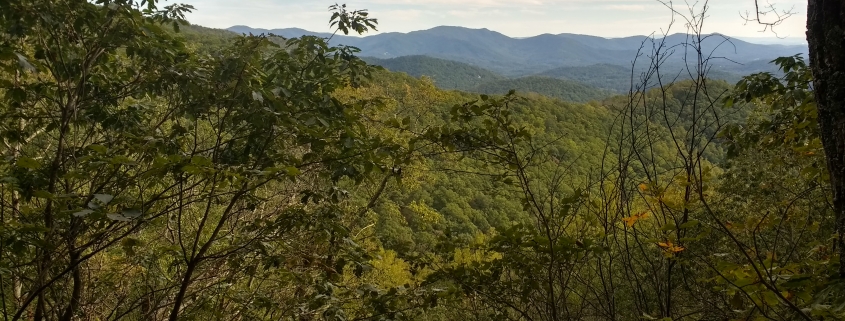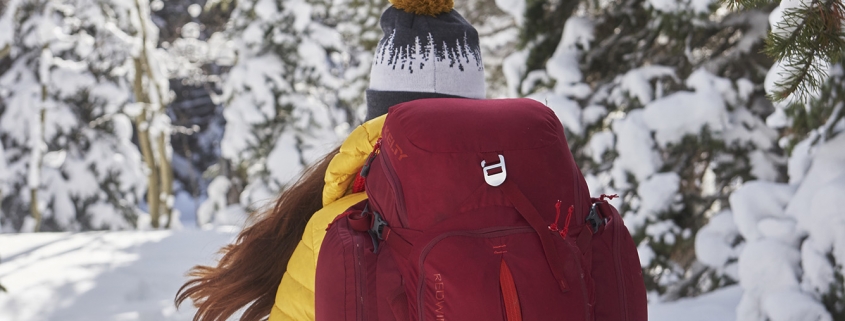This one is for all the local history buffs out there! This hike takes you past the ruins of Rattlesnake lodge, built in 1904 as a summer retreat for Dr. Chase P. Ambler and his family. Dr. Ambler was an avid forest conservationist and is regarded by many as the father of the Great Smoky Mountains National Park. The trail starts at Bull Gap and follows the Mountains to Sea Trail east. This moderate hike starts with uphill switchbacks, but don’t worry, it levels out.
Early spring is a particularly lovely time to go, as there are a great number of daffodils on the grounds. Spring through fall the trail can be accessed from the Blue Ridge Parkway, but when it is closed during the winter it can be accessed via Elk Mountain Scenic Highway.

Frugal crew member Maggie enjoying the solitude of Rattlesnake Lodge’s “yard”.
Length: 3.8 mi lollipop
Difficulty: moderate
Directions: From Asheville, head north on Merrimon Ave. Turn right on Beaverdam Rd. After 0.6 mi, turn left on Elk Mountain Scenic Hwy. After 7 mi, continue straight on Ox Creek Rd. At 0.2 mi you will see a small pull out on the right. Park here or along the road (be sure your car is all the way off the road) and access the trail from the pull out.



